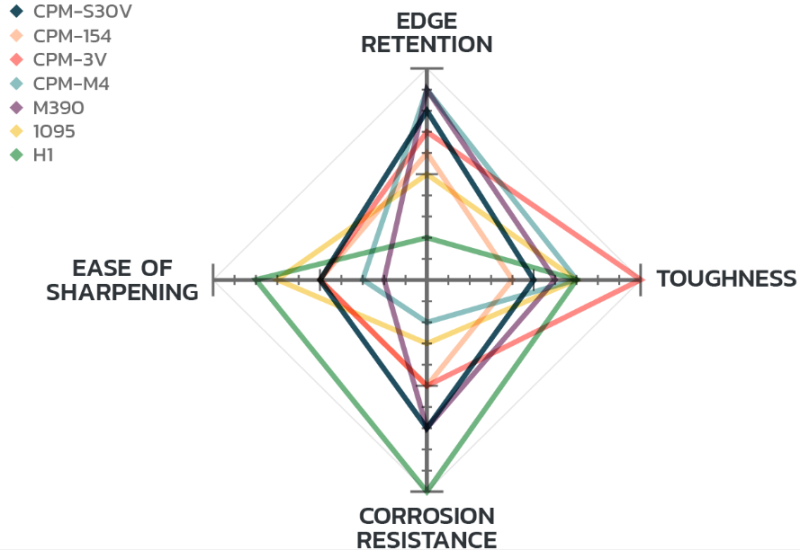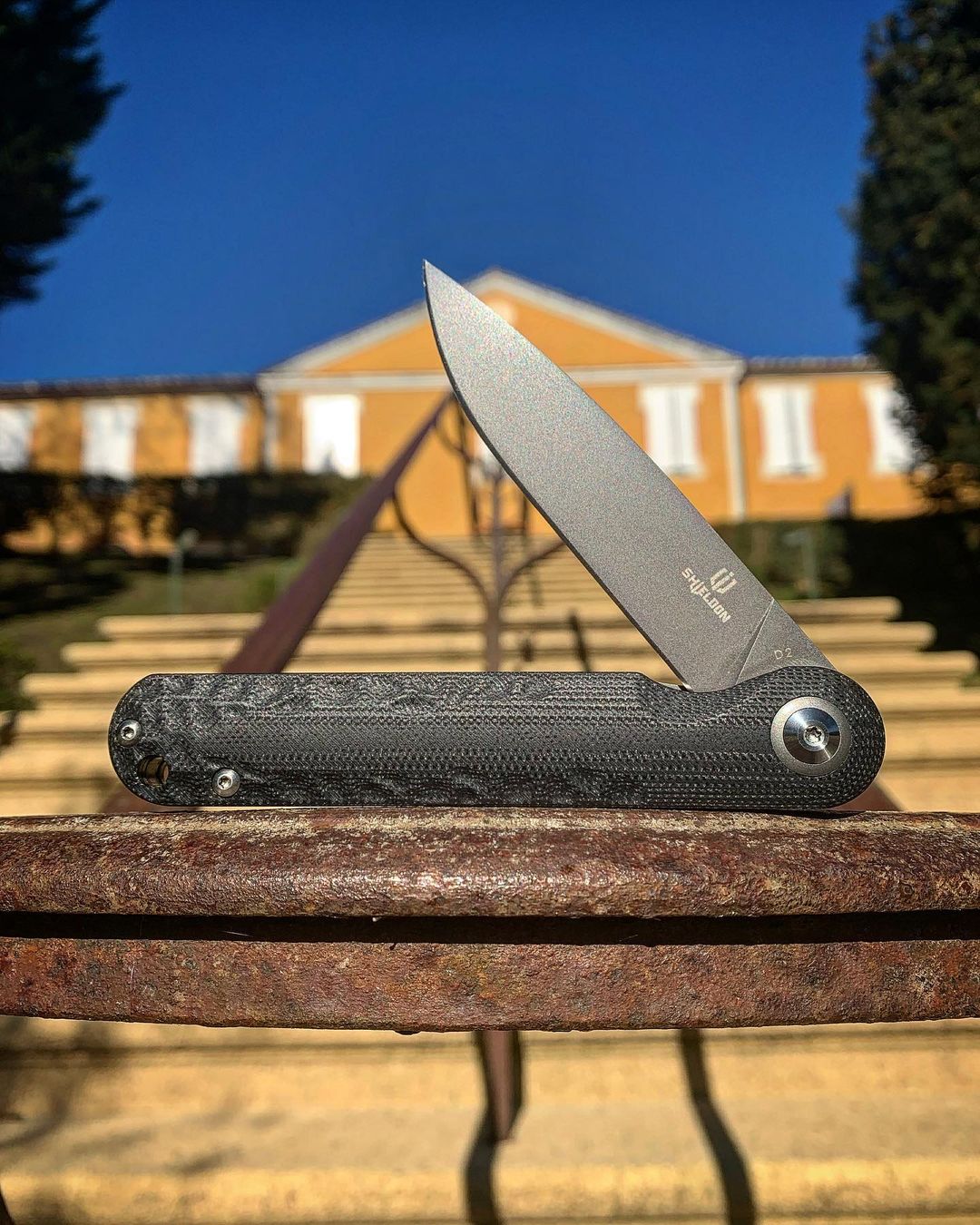BEST KNIFE STEEL COMPARISON
Blades are designed to cut—that’s obvious enough. When it comes to getting the job done there are four main factors that determine steel quality. The goal of many knife users is to find the best steel to fits their needs. A knife with great edge retention will vaporize cardboard even after months of carry. Toughness is key on hard-use camp knives and fixed blades. Prioritize Corrosion Resistance if you take your knives to high humidity environments. Sharpenability is pretty self-explanatory, but softer steels can be touched up in the field on that big elk hunt.
EDGE RETENTION
Edge Retention (also called strength) is your knife’s ability to hold sharpness during use. Whether it’s dicing up cardboard boxes, feather sticking some firewood, or hacking up sisal rope, no one likes a dull knife. It’s remarkable the increased performance you find in cut tests when comparing premium steels to lower end options.
TOUGHNESS
A tough blade steel resists chips and total failure when subjected to beating, impact, twisting, and torsion. Tough blade steels are ideal for camping and hard-use. Where a normal steel would chip, these knives can sustain intense batoning sessions, power through staples, and glide through steel strapping.
CORROSION RESISTANCE
Are you in a humid, wet, and salty environment? Do you frequently use your knife to meal prep acidic ingredients like citrus or tomatoes? Certain steels are so good at resisting rust and corrosion that they can be left abused and salty without ill-effect. Carbon steels will pit and rust aggressively in wet environments if not properly cared for. Knives prone to corrosion can be protected with a thin coat of mineral oil.
EASE OF SHARPENING
Maybe one of the most frequently overlooked aspects of blade steel is sharpenability. Touching up certain steels with your sharpening stone is an easy, pain-free process whereas harder steels can make for an all-day affair to bring them back to sharp. Being able to field sharpen your knife can be the difference between life and death in the wilderness. An easy to sharpen knife will generally not exhibit excellent edge retention.
Blade steel is totally a super important factor to consider when buying a knife, but wait a second—it isn’t the be-all, end-all. Heat treat, blade geometry, the job at hand, and the sharpening of the blade all play a massive role in the performance of the steel.
HEAT TREAT
Heat Treatment is the process of hardening and tempering the blade steel through heat. This increases the strength of the edge tremendously. A well-done and consistent heat treat goes a long way towards the performance of a knife. High hardness (60 HRC+) increases the edge retention of the steel at the cost of brittleness. Low hardness increases toughness at the cost of edge strength. The effect of heat treat varies based on the composition of the steel.
BLADE GEOMETRY
Blade geometry is a subject that deserves its own article, but here’s a summary. Cutting and slicing performance improves as the thickness behind the edge decreases. Additional considerations include the thickness of the blade stock and the primary grind. Knives such as the Spyderco Chaparral have a very thin edge at only .014”. In contrast, a thicker blade stock with more material at the edge will yield a tougher, less slicey knife like the Ka-Bar Becker BK2.
SHARPENING
Sharpening goes hand in hand with blade geometry. A 30 degree inclusive edge means that each side of the blade is sharpened to 15 degrees. Inherently, more acute sharpening angles will see better cutting performance than more obtuse angles. In contrast, a more obtuse angle will be more stable and durable. Certain blade steels are more stable at highly acute angels.
CUTTING TASK
Often overlooked is the job at hand. When you put your knife to work, what tasks will it need to conquer?
knife steels that exhibit extreme hardness and edge retention are amazing at cutting through warehouses full of cardboard but hit a staple and your knife may suffer a chip. Tough steels excel at camp chores and batoning wood but are unable to be used at very thin edge profiles while maintaining edge stability.
In reality, there is no perfect blade steel in the same way that there is no perfect knife. Compare your use cases to choose the perfect knife for you.
STRENGTH VS. TOUGHNESS
The best blade steels exhibit a balance of strength and toughness. Blade steels with an insane amount of hardness (pushing towards 70 HRC) tend to lack stability and can suffer from cracks, chipping, and total failure. Extremely tough blades may not cut as well as desired and can suffer from edge rolling and difficulty maintaining an edge.
The charts below aid visualization of the strengths and weaknesses of a particular knife steel. The most well rounded steels like CPM-154 and 154CM create an even shape while a steel like CPM-3V is severe due to high toughness and lower scores in all other categories.


